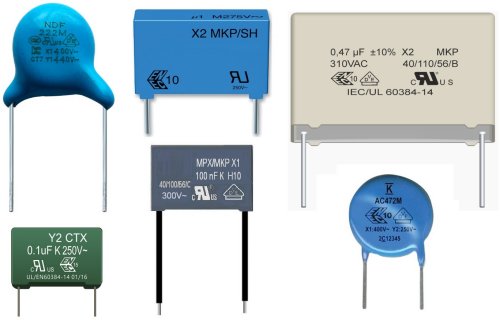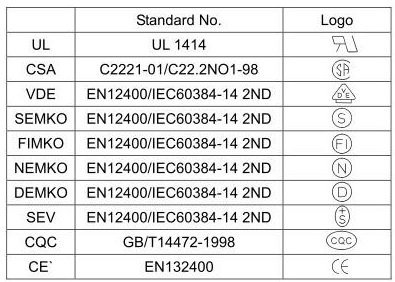@ruger |
|
|
|
||
|
X and Y Capacitors The X capacitor is connected between Live and Neutral to eliminate the differential mode. It is designed to fail short, which will cause an overcurrent protective device, like a fuse or circuit breaker, to open. Therefore, a capacitor failing in this fashion should not cause any electrical shock hazards. The Y capacitor is connected between the Live and Ground to eliminate common mode. Generally these capacitors are approximately a few nF, so as not exceed the ground allowable leakage value defined by the relevant safety standards. It is designed to fail open, if it were to fail short this could lead to a fatal electric shock due to the loss of the ground connection. A failure will cause your electronic device to be subjected to the noise and interference that the capacitor would normally filter out. The X and Y safety capacitors are sub-divided into a X1 and X2 capacitors and Y1 and Y2 capacitors. X2 and Y2 safety capacitors are appropriate for household applications while X1 and Y1 safety capacitors are used in industrial settings. X1 and Y1 can be used in non-industrial applications, however the cost and size will increase. Y2 capacitors can be safely used in place of an X2 capacitor, but not visa-versa. This is because, if an X2 fails short between Live and Ground it could present a fatal electric shock hazard. Also it would not meet the line-to-ground safety standards. Y2 safety capacitors are more robust, are able to withstand higher peak impulse voltages, and are designed to fail open as opposed to failing short. A Typical mains filtering circuit
Summary Because Class-X and Class-Y capacitors must be connected directly to AC lines (Live-to-Neutral or Live-to-Ground) in order for them to perform their EMI and RFI filtering functions, they must be rated and certified as "safety capacitors." Both Class-X and Class-Y capacitors have subclasses: subclass X1, X2, and X3, and subclass Y1, Y2, Y3, and Y4. Subclass X2 and Y2 are the most common type of subclass for applications that use 120VAC (USA) or 220/240VAC (Europe). X/Y combination capacitors are also available. Whichever safety capacitor is chosen, make sure that it has all the proper safety-approval logo markings.
|
|||||||||
Last Update 19/5/2021 |
|||||||||


